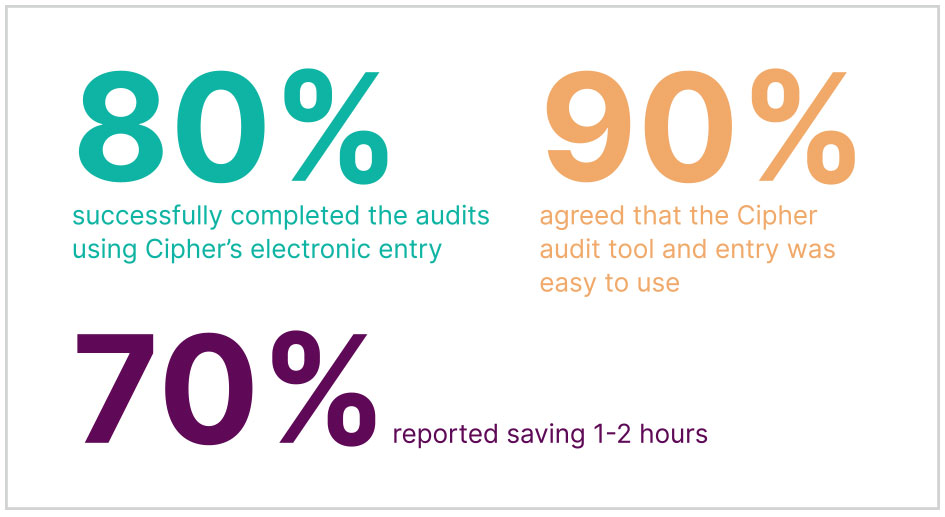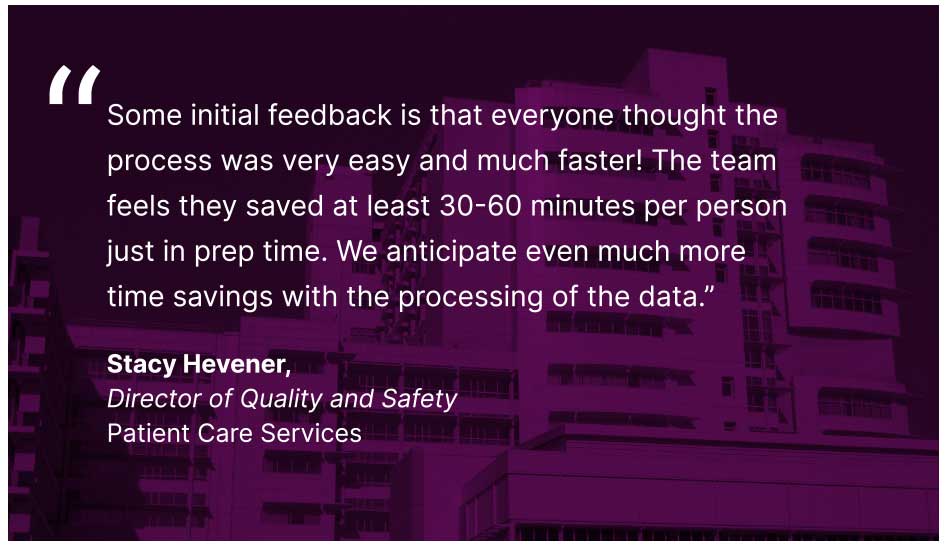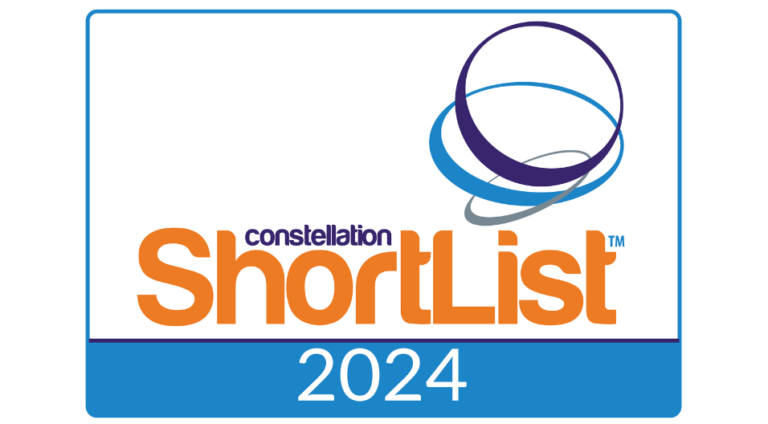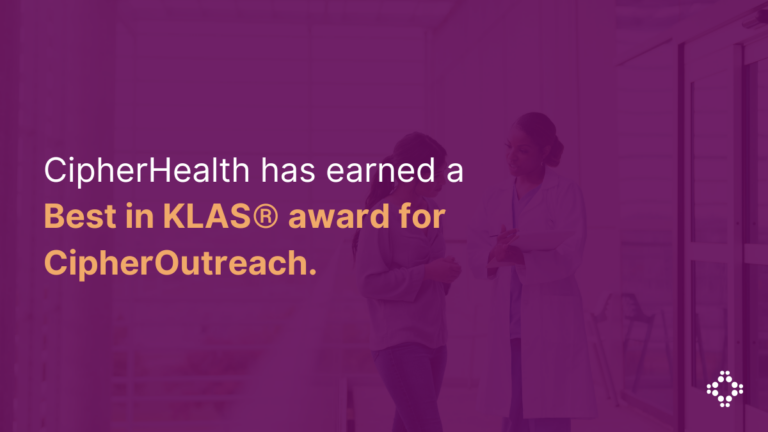

The Value-Add of Digitizing Hospital Acquired Pressure Injury (HAPI) Point Prevalence Skin Assessments
UC Davis Medical Center drives efficiency, quality & safety in quarterly Skin Prevalence Days with CipherRounds
Background
UC Davis Medical Center, a 646-bed acute care teaching hospital located in Sacramento, CA, recently implemented CipherRounds for their quarterly Hospital Acquired Pressure Injury (HAPI) point prevalence assessments in place of their pen and paper approach. As of early 2020, the medical center already uses CipherHealth’s Patient, Staff and Location Rounding, as well as Post-Discharge Outreach, and remains active in these different modules. While HAPI point prevalence assessments were already an established effort at UC Davis, the Patient Care Services (PCS) Quality & Safety team and Operational Analytics team transformed the process to assess patient risk, improve patient safety, save time and meet National Database of Nursing Quality Indicator (NDNQI) expectations using CipherRounds.
Challenge
Prior to partnering with CipherHealth, UC Davis’ nursing teams performed HAPI point prevalence rounds on patients using pen and paper audit forms. From both a rounding and analytics perspective, this was very time-consuming. Assessments occur quarterly with the goal to assess every patient on an inpatient unit of the hospital. It was an “all hands on deck” approach to reach each patient to assess skin injuries, with the Wound Care team leading the effort and the bedside RNs assisting. The staff would prepare a paper audit form with a demographic label for each patient, assess the patient and document everything after the assessment was completed on this form. Each form was reviewed for accuracy by a wound certified nurse prior to forwarding it to the Operational Analytics team. An analyst would then crosswalk each patient’s form to their respective line item on an excel spreadsheet generated from the EMR, a labor intensive task as they had to decipher hand-written forms, enter all skin assessments (and reassessments) and pair them with other key data from the EMR for every patient.
Goal
UC Davis’ PCS Quality & Safety team aimed to standardize the process on a digital platform, have real-time documentation of the assessments and streamline the data collection process towards submission to NDNQI — the only national nursing database that provides quarterly and annual reporting of structure, process, and outcome indicators to evaluate nursing care at the unit level.1 This would go a long way towards streamlining the planning, logistics and data entry, saving time for their staff. Additionally, by optimizing the process, more focus could be placed on patient care.
Solution
Working in conjunction with CipherHealth, the PCS Quality & Safety team designed a customized script, allowing for up to 11 pressure injuries to be documented per patient. The data is available immediately for the Operational Analytics team to start the NDNQI submission process. As a Magnet hospital, UC Davis uses this data to support the magnet designation process as well.
Impact
CipherHealth worked in partnership with the PCS Quality & Safety team to design the script to align with their current rounding forms while also providing a data export that met their submission needs. The ability for the staff to both document and assess patients simultaneously not only improved the process, but made it much more manageable for the staff. Overall, the implementation was a success. The first HAPI Point Prevalence day using CipherRounds occurred on 9/1/21, with a total of 594 audits completed by 13 rounders.

In a survey of the Staff Nurses, Nurse Residents and Wound Team Nurses, 80% said they were able to successfully complete the audits using CipherRounds’ electronic entry and did not have to fall back on pen and paper. Additionally, 90% somewhat or strongly agreed that the CipherRounds audit tool and entry was easy to use. From a time-saving perspective, 70% of staff reported saving 1-2 hours. The word “efficiency” came up in the survey as an added benefit of this digital approach.

Conclusion
HAPI Point Prevalence assessments are an important quality initiative that all hospitals should be doing. This use case serves to illustrate how time and resource allocation are improved by a digital, routinized approach. Logistics and planning can take a backseat to reaching each patient, ensuring their safety, capturing accurate data and meeting accreditation goals. CipherHealth’s Customer Success Managers will continue to work with UC Davis’ team as they prepare for their September 2022 assessment and determine if any other reporting functionality is needed.
1. The National Database of Nursing Quality Indicators® (NDNQI®)




